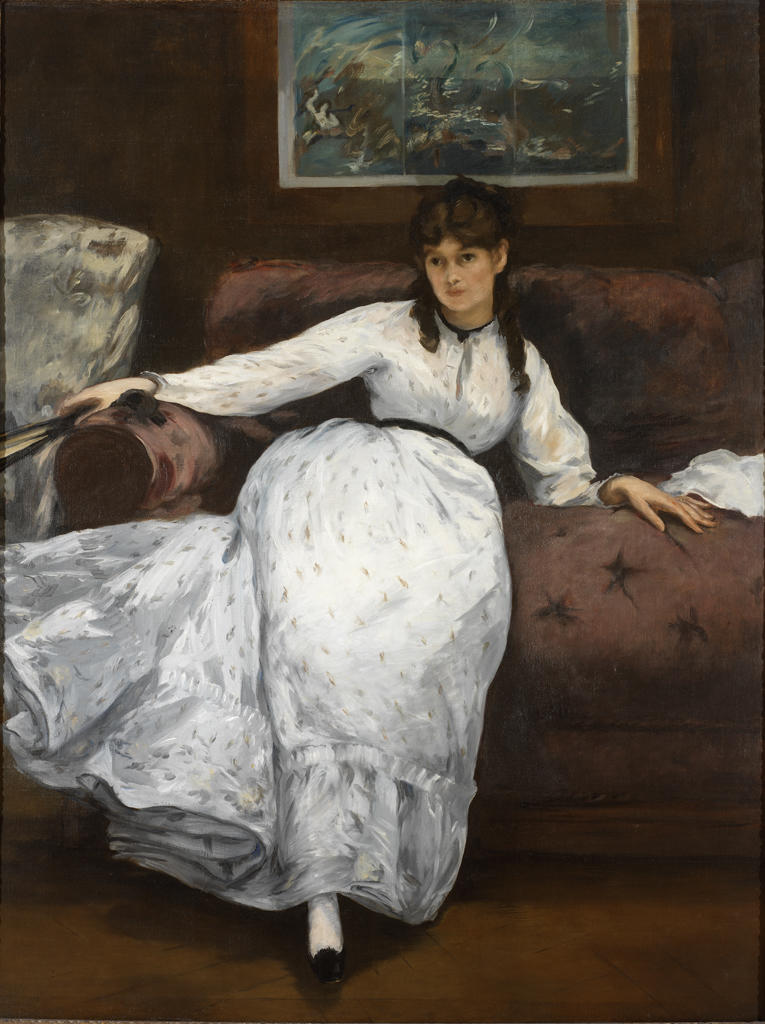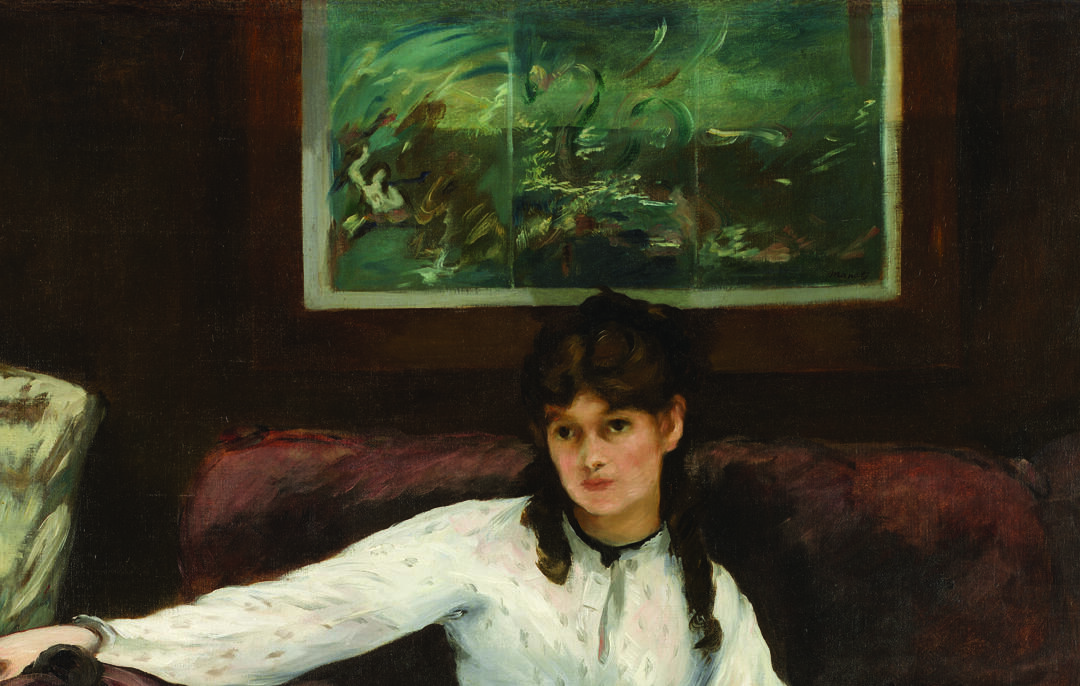Not every painting inspires 15 fourth-graders to bob up and down with excitement, blurting out their thoughts before they have been called on. Repose (Le Repos) by Edouard Manet is one of them.
“It’s like she doesn’t care,” says one boisterous boy with close-cropped hair. Before we even sit down, he is engaged in reading the posture of the painting’s subject—a woman in a billowing dress reclining awkwardly on an overstuffed couch.
One girl knows something about the painting already. Her friend’s mother is an art teacher and told her that the painting was criticized because the woman wasn’t sitting like a lady should.
“It’s like she’s saying, ‘I’m so tired of being proper,’” says another girl in response to this information. “Like she got out of work and she’s tired.”
The boisterous boy interjects: “I don’t think back in the old days ladies could work.”
“Interesting that you should say that,” I say, amazed by how a very relevant piece of information about the painting begs to be shared already, “because this woman was one of the rare upper-class ladies who worked in this era. She was a painter herself, and female artists were very uncommon at the time.”
What is it about this woman that calls to students from nearly 150 years away? Even without art-historical knowledge, they can read the posture as bold. They can read its subject, Berthe Morisot (an accomplished painter who exhibited with Impressionists), as a woman of strong emotions and, as one girl put it, “confidence.” They are drawn to the mystery of what she and Manet are expressing—seemingly collaboratively—with the choice of posture, facial expression, and setting.
Morisot and Manet were close friends, colleagues, and even became relatives when she married his brother, Eugene, at the ripe old age (in those days) of 33. Eugene was also an artist, but he was willing to give up his career to manage hers. In one of Manet’s paintings of Morisot, she has been described as staring out at Manet, “daring him to take her seriously as a fellow artist.”1
“What is she staring at?” asked a high school student on a tour a month before. We had just turned the corner into this small gallery, its suite of paintings by Claude Monet punctuated by Manet’s imposing, nearly five-by-four-foot canvas. “It looks like she’s dead. What expression is that?”
She is not happy or sad, the high school students agreed: “She’s uncomfortable.” For these older students, the focus turned toward a missing leg. It is tucked up under her, hidden by her dress. We took turns trying out her posture on the velvet ottoman in the gallery. Her almost contorted position is the Mona Lisa smile of gestures. It perplexed us. Each student read it differently.
Back to the fourth-graders: She’s saying, offers one student, “If I wanna sit like this, I can.”
The group zeroes in on the framed artwork hanging behind her. Someone always notices it. “Is it one of her paintings?” the boy with all the energy asks. It’s not, I say, and tell them that it is a Japanese woodblock print that was owned by Manet. We look more carefully at it. The boy has to move to be able to see it well in the glare of the gallery lights. I tell them that it depicts a woman caught in a wave. Though Manet painted it quite loosely, students can just make this out now that I have described it.
“I think it’s interesting that he chose to include it in this painting,” I say. “What do you think about his choice? Do you think it is related to Morisot? If so, how?”
“He’s saying that she’s a fighter,” says the boy.
“He’s saying that girls can do anything they want,” says one girl.
“Girls can be as brave as boys can,” says another girl.
After the tour, I am possessed by the need to learn more about Morisot than I know. I stumble upon an article that quotes her writing in one of her notebooks: “I do not think any man would ever treat a woman as his equal,” she wrote, “and it is all I ask because I know my worth.”2
I wonder what the students would think of Morisot’s words. They give us such a vivid sense of her personality and the context in which the painting was made. I pledge to share them next time I teach from the painting. Now if only I could share the students’ quotes with her.
Jackie Delamatre
Museum educator

